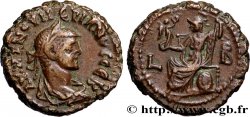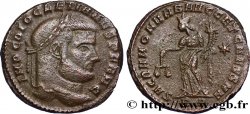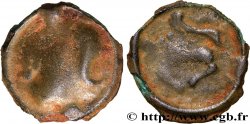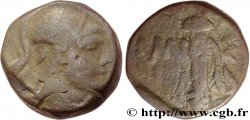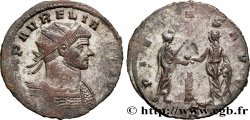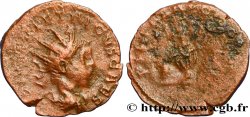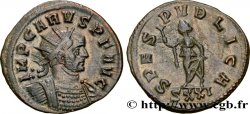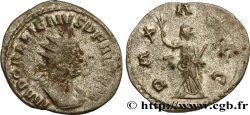E-auction 255-178194 - brm_174223 - DIOCLETIAN Aurelianus
You must signin and be an approved bidder to bid, LOGIN TO BID. Accounts are subject to approval and the approval process takes place within 48 hours. Do not wait until the day a sale closes to register. Clicking on « bid » constitutes acceptance of the terms of use of cgb.fr private e-auctions.
Bids must be placed in whole Euro amounts only. The sale will start closing at the time stated on the item description; any bids received at the site after the closing time will not be executed. Transmission times may vary and bids could be rejected if you wait until the last second. For further information ckeck the E-auctions F.A.Q.
NO BUYER'S FEE.
NO BUYER'S FEE.
| Estimate : | 145 € |
| Price : | 106 € |
| Maximum bid : | 112 € |
| End of the sale : | 05 March 2018 14:21:00 |
| bidders : | 6 bidders |
Type : Aurelianus
Date: 292
Mint name / Town : Lyon
Metal : billon
Millesimal fineness : 50 ‰
Diameter : 22 mm
Orientation dies : 6 h.
Weight : 3,42 g.
Rarity : R1
Officine: 1re
Coments on the condition:
Exemplaire sur un flan mince, bien centré. Très beau portrait particulier. Frappe faible et molle au revers. Patine grise avec des reflets métalliques
Catalogue references :
Predigree :
Cet exemplaire provient de la trouvaille n° 1
Obverse
Obverse legend : IMP DIOCLETIANVS AVG.
Obverse description : Buste radié et cuirassé de Dioclétien à droite avec pan de paludamentum, vu de trois quarts en avant (B01).
Obverse translation : “Imperator Diocletianus Augustus”, (L’empereur Dioclétien auguste).
Reverse
Reverse legend : IOVI - AVGG/ -|-// A.
Reverse description : Jupiter nu jusqu'à la ceinture assis à gauche, tenant un globe nicéphore de la main droite et un sceptre long de la main gauche.
Reverse translation : “Iovi Augustorum”, (Au Jupiter des augustes).
Commentary
Poids léger. Avec l’intégralité de son argenture superficielle. Cassure de coin au revers au niveau du V de AVGG. Rubans de type 3 aux extrémités bouletées. Cuirasse et épaulière cloutées. Ptéryges fines et tombantes. Il faut remarquer que c’est le portrait de Maximien Hercule qui a été gravé sur cet aurelianus de Dioclétien. Daniel Gricourt signalait déjà ce genre d’anomalie dans son article de la Revue Belge de Numismatique en 1984 et dans le Supplément II, op. cit, p. 78 “D’autres cas concernent la pertinence des titulatures et des effigies : parfois, le scalptor grave la titulature d’un empereur autour de l’effigie d’un autre des Tétrarques. Une titulature et un buste de Dioclétien peuvent ainsi être associés à une titulature de Maximien” (Gricourt, p. 68, n° 8). Cette variété ne semble pas avoir été signalée. Prendra le numéro 436f dans le Supplément III du Bastien.
Lightweight. With all its surface silvering. Die break on the reverse at the level of the V of AVGG. Type 3 ribbons with rounded ends. Studded breastplate and shoulder guard. Thin, drooping pteryges. It should be noted that it is the portrait of Maximian Hercules that was engraved on this aurelianus of Diocletian. Daniel Gricourt already pointed out this type of anomaly in his article in the Revue Belge de Numismatique in 1984 and in Supplement II, op. cit, p. 78 “Other cases concern the relevance of titles and effigies: sometimes, the scalptor engraves the title of an emperor around the effigy of another of the Tetrarchs. A title and a bust of Diocletian can thus be associated with a title of Maximian” (Gricourt, p. 68, no. 8). This variety does not appear to have been reported. Will take number 436f in Supplement III of Bastien
Lightweight. With all its surface silvering. Die break on the reverse at the level of the V of AVGG. Type 3 ribbons with rounded ends. Studded breastplate and shoulder guard. Thin, drooping pteryges. It should be noted that it is the portrait of Maximian Hercules that was engraved on this aurelianus of Diocletian. Daniel Gricourt already pointed out this type of anomaly in his article in the Revue Belge de Numismatique in 1984 and in Supplement II, op. cit, p. 78 “Other cases concern the relevance of titles and effigies: sometimes, the scalptor engraves the title of an emperor around the effigy of another of the Tetrarchs. A title and a bust of Diocletian can thus be associated with a title of Maximian” (Gricourt, p. 68, no. 8). This variety does not appear to have been reported. Will take number 436f in Supplement III of Bastien







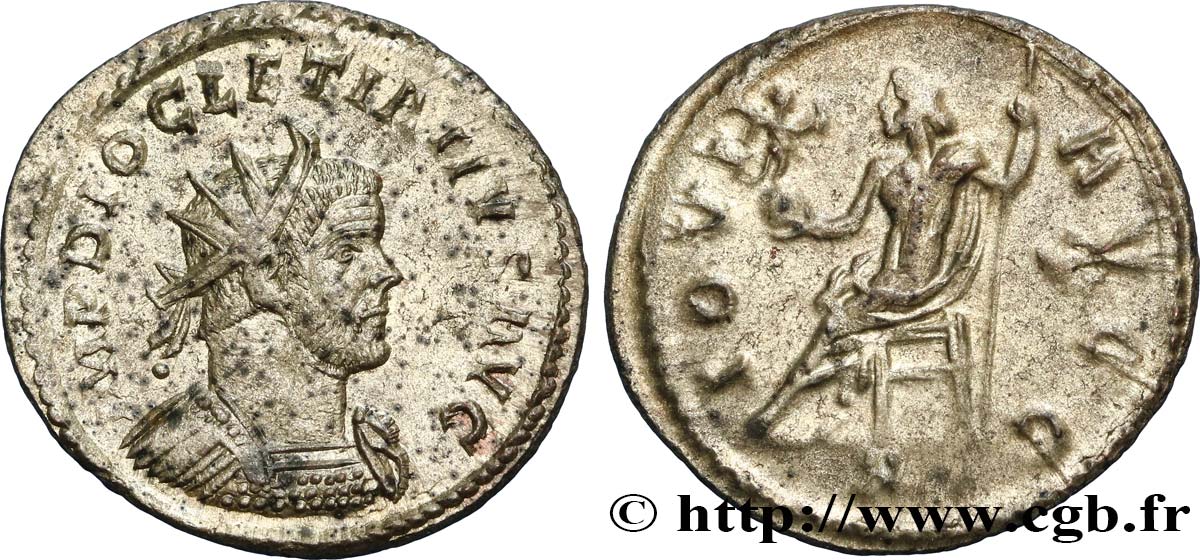
 Report a mistake
Report a mistake Print the page
Print the page Share my selection
Share my selection Ask a question
Ask a question Consign / sell
Consign / sell
 Full data
Full data